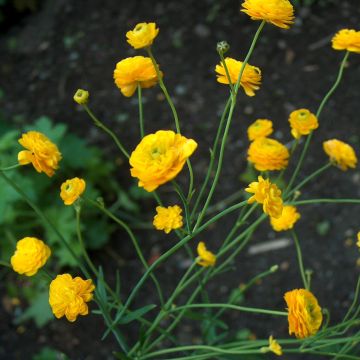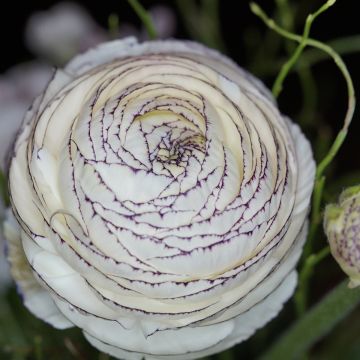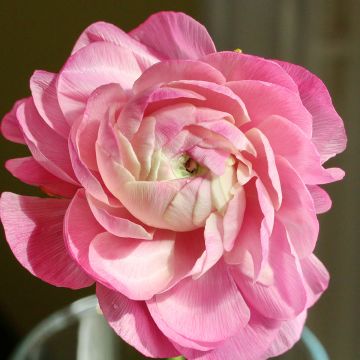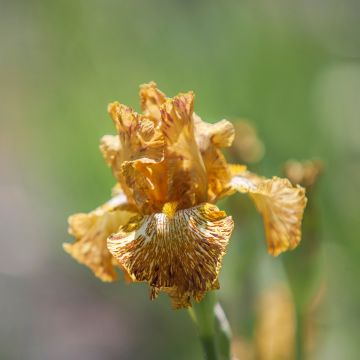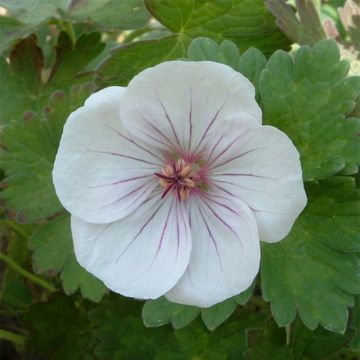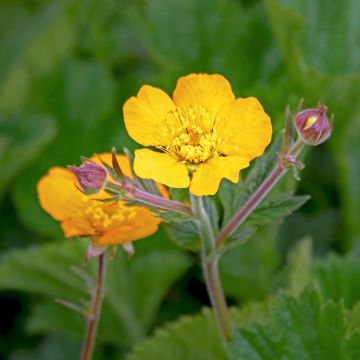

Ranunculus aquatilis - common water crowfoot
Ranunculus aquatilis - common water crowfoot
Ranunculus aquatilis
Lesser Spearwort
This plant carries a 12 months recovery warranty
More information
We guarantee the quality of our plants for a full growing cycle, and will replace at our expense any plant that fails to recover under normal climatic and planting conditions.
From €5.90 for pickup delivery and €6.90 for home delivery
Express home delivery from €8.90.
Does this plant fit my garden?
Set up your Plantfit profile →
Description
The Ranunculus flammula or Lesser Spearwort is a valuable species around ponds or on banks due to its wild appearance and its long golden-yellow flowering. Very hardy, very floriferous and not invasive, it is an excellent plant in shallow water areas, with oxygenating properties, appreciated by wildlife. Its small size makes it suitable for small ponds, and its beautiful wild look allows you to create natural scenes by the water's edge or in the water. It thrives in sunny or partially shaded positions in moist soil and self-seeds easily.
The Ranunculus flammula, also known as Lesser Spearwort, belongs to the Buttercup family, just like our famous buttercup. It is native to Europe. It is found in cool and humid places such as riverbanks. It is a small perennial plant with evergreen foliage. It forms a 30 cm (12in) tall clump when in flower and spreads at least 20 cm (8in) on the ground. Its leaves are lanceolate and narrow, dark green in colour. Its flowering period is from June to September depending on the climate. Clumps of foliage emerge from reddish stems bearing cup-shaped flowers, solitary or clustered in panicles, measuring 1 to 2 cm (0 to 1in), in golden-yellow colour, similar to buttercups.
Very easy to grow in moist soil, the Lesser Spearwort has good hardiness (-20°C). It prefers waterlogged soils, even marshy ones. As a pond plant, immerse it between 0 and -20 cm (0 and -8in) deep. It is also a good perennial for damp banks, even in partial shade, next to the Rodgersia pinnata Chocolate Wings, or the Actaea simplex Brunette, with purple foliage. Also consider pairing it with Acorus and Tradescantias.
Report an error about the product description
Ranunculus aquatilis - common water crowfoot in pictures


Flowering
Foliage
Plant habit
Botanical data
Ranunculus
aquatilis
Ranunculaceae
Lesser Spearwort
Western Europe
Other Ranunculus - Buttercup
Planting and care
The ranunculus is planted in ordinary, moist soil, preferably neutral, even clayey, in the sun or semi-shade. As a weakly submerged pond plant, install it between 0 and -20 cm (0 and -8in). It does not require any particular care.
Planting period
Intended location
Care
This item has not been reviewed yet - be the first to leave a review about it.
Spring flowering perennials
Haven't found what you were looking for?
Hardiness is the lowest winter temperature a plant can endure without suffering serious damage or even dying. However, hardiness is affected by location (a sheltered area, such as a patio), protection (winter cover) and soil type (hardiness is improved by well-drained soil).

Photo Sharing Terms & Conditions
In order to encourage gardeners to interact and share their experiences, Promesse de fleurs offers various media enabling content to be uploaded onto its Site - in particular via the ‘Photo sharing’ module.
The User agrees to refrain from:
- Posting any content that is illegal, prejudicial, insulting, racist, inciteful to hatred, revisionist, contrary to public decency, that infringes on privacy or on the privacy rights of third parties, in particular the publicity rights of persons and goods, intellectual property rights, or the right to privacy.
- Submitting content on behalf of a third party;
- Impersonate the identity of a third party and/or publish any personal information about a third party;
In general, the User undertakes to refrain from any unethical behaviour.
All Content (in particular text, comments, files, images, photos, videos, creative works, etc.), which may be subject to property or intellectual property rights, image or other private rights, shall remain the property of the User, subject to the limited rights granted by the terms of the licence granted by Promesse de fleurs as stated below. Users are at liberty to publish or not to publish such Content on the Site, notably via the ‘Photo Sharing’ facility, and accept that this Content shall be made public and freely accessible, notably on the Internet.
Users further acknowledge, undertake to have ,and guarantee that they hold all necessary rights and permissions to publish such material on the Site, in particular with regard to the legislation in force pertaining to any privacy, property, intellectual property, image, or contractual rights, or rights of any other nature. By publishing such Content on the Site, Users acknowledge accepting full liability as publishers of the Content within the meaning of the law, and grant Promesse de fleurs, free of charge, an inclusive, worldwide licence for the said Content for the entire duration of its publication, including all reproduction, representation, up/downloading, displaying, performing, transmission, and storage rights.
Users also grant permission for their name to be linked to the Content and accept that this link may not always be made available.
By engaging in posting material, Users consent to their Content becoming automatically accessible on the Internet, in particular on other sites and/or blogs and/or web pages of the Promesse de fleurs site, including in particular social pages and the Promesse de fleurs catalogue.
Users may secure the removal of entrusted content free of charge by issuing a simple request via our contact form.
The flowering period indicated on our website applies to countries and regions located in USDA zone 8 (France, the United Kingdom, Ireland, the Netherlands, etc.)
It will vary according to where you live:
- In zones 9 to 10 (Italy, Spain, Greece, etc.), flowering will occur about 2 to 4 weeks earlier.
- In zones 6 to 7 (Germany, Poland, Slovenia, and lower mountainous regions), flowering will be delayed by 2 to 3 weeks.
- In zone 5 (Central Europe, Scandinavia), blooming will be delayed by 3 to 5 weeks.
In temperate climates, pruning of spring-flowering shrubs (forsythia, spireas, etc.) should be done just after flowering.
Pruning of summer-flowering shrubs (Indian Lilac, Perovskia, etc.) can be done in winter or spring.
In cold regions as well as with frost-sensitive plants, avoid pruning too early when severe frosts may still occur.
The planting period indicated on our website applies to countries and regions located in USDA zone 8 (France, United Kingdom, Ireland, Netherlands).
It will vary according to where you live:
- In Mediterranean zones (Marseille, Madrid, Milan, etc.), autumn and winter are the best planting periods.
- In continental zones (Strasbourg, Munich, Vienna, etc.), delay planting by 2 to 3 weeks in spring and bring it forward by 2 to 4 weeks in autumn.
- In mountainous regions (the Alps, Pyrenees, Carpathians, etc.), it is best to plant in late spring (May-June) or late summer (August-September).
The harvesting period indicated on our website applies to countries and regions in USDA zone 8 (France, England, Ireland, the Netherlands).
In colder areas (Scandinavia, Poland, Austria...) fruit and vegetable harvests are likely to be delayed by 3-4 weeks.
In warmer areas (Italy, Spain, Greece, etc.), harvesting will probably take place earlier, depending on weather conditions.
The sowing periods indicated on our website apply to countries and regions within USDA Zone 8 (France, UK, Ireland, Netherlands).
In colder areas (Scandinavia, Poland, Austria...), delay any outdoor sowing by 3-4 weeks, or sow under glass.
In warmer climes (Italy, Spain, Greece, etc.), bring outdoor sowing forward by a few weeks.




































